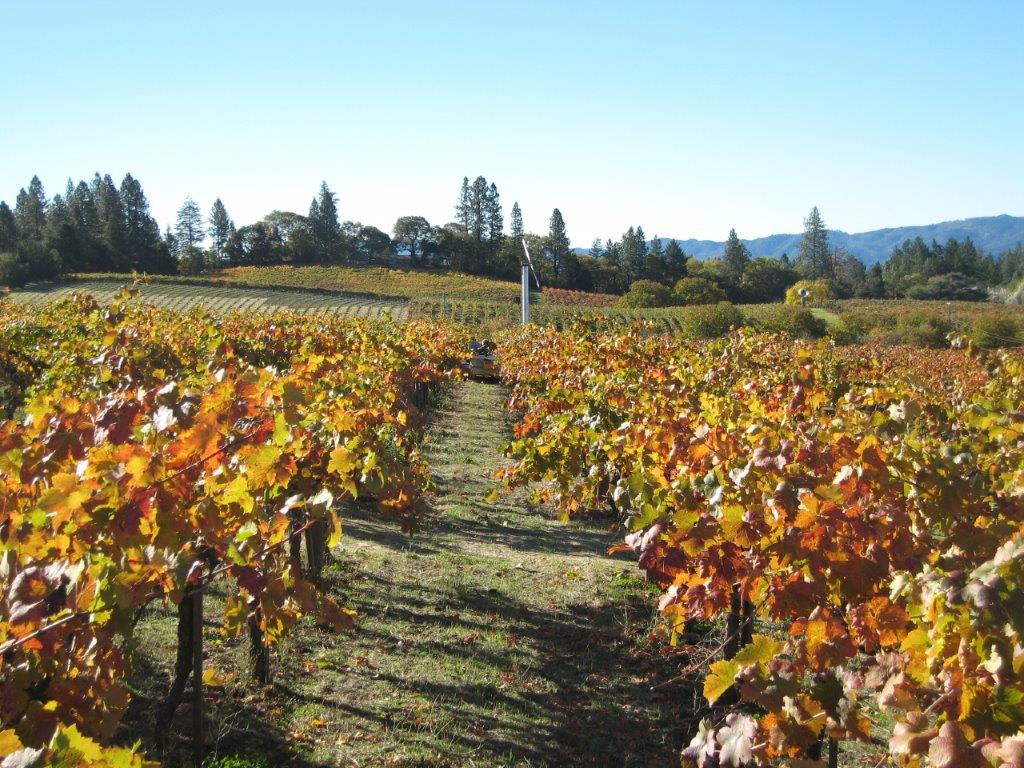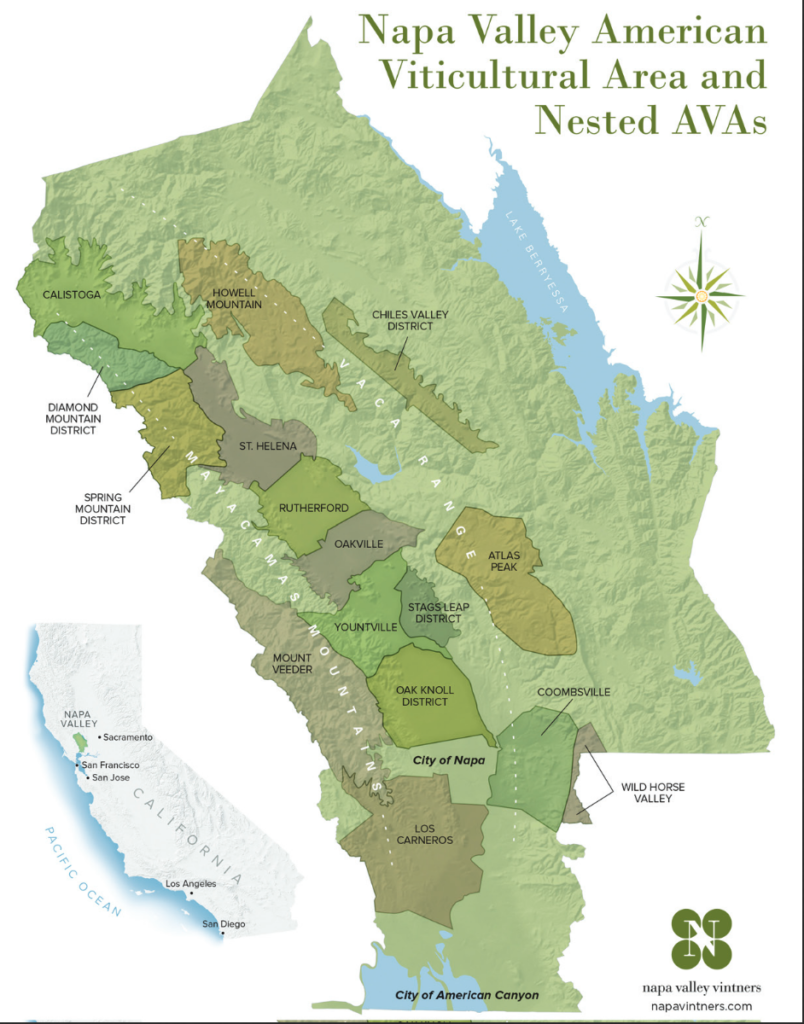
Although we often think of the Napa Valley wine region generically, it contains numerous sub-appellations that reflect its varying geology and climates. Basically, Napa consists of a valley floor running along the Napa River, bordered on the west by the Mayacamas Mountains and on the east by the Vaca Range. Although Napa Valley is only about 30 miles long, it has dramatic climate variations and about 35 different soil types. So, the appellation that a Napa wine comes from really does matter . . .
- When you see “Napa Valley” on a wine label, that means that the grapes can be sourced from anywhere in the overall Napa appellation, and while it will be distinctively "Napa" it won't have unique characteristics associated with the sub-appellations. If the label contains Napa Valley plus one of the sixteen sub-appellation names, (such as, “Oakville – Napa Valley”) at least 85 percent of the grapes must come from that unique area.
- When trying to sort out Napa, perhaps the key distinction is between the "mountain" and the “valley” appellations. Those appellations are shown on the map below.
The five “mountain” appellations typically produce smaller grapes with deeper color and stronger tannins. The vineyards are typically located 600 - 2,600 feet above sea level, where they get plenty of sunshine and cooler daytime temperatures, and they produce some of Napa’s most interesting wines. The west side mountain appellations are Diamond Mountain, Spring Mountain and Mount Veeder, and the east side appellations are Howell Mountain and Atlas Peak. If you prefer bolder wines with firmer tannins, nice acidity, black fruits, spice, coffee and earthiness, look there.
- One of the most highly regarded mountain appellations is Howell Mountain. Its defining characteristic is that it’s located above the fog line, at 1,400 – 2,600 feet. That means it gets plenty of sunshine, which results in smaller grapes with thick skins – and therefore more tannic wines.
- In contrast, the eleven valley appellations tend to produce lusher and more refined wines. If you prefer wines with milder tannins, plum, mocha notes and more dominant fruit, you may prefer these wines.
Our featured wine is the Howell Mountain Vineyard 2018 Cabernet Sauvignon (about $100). This wine threw us a bit of a curve, since it had a more subtle, European style than we expected. That said, we liked it a lot. The wine had pleasant aromas of black fruit, a whiff of cherry, and a nice hint of spice. On the palate it was medium- to full-bodied and well balanced, with enticing black fruit, cedar notes, firm but not overpowering tannins, and a long finish.
- We decanted the wine for an hour and paired it with a filet mignon. Cabernet and a nice steak are always a good match because the meat’s protein and fat balance the wine’s tannins. If you have a particularly tannic wine, a little pepper on the steak will help tame it.
- This Cabernet should continue to improve in the cellar over the next several years and will cellar for several decades. Then again, who can wait that long?
- Some other Howell Mountain producers to look for: Robert Foley Vineyards, O’Shaughnessy Estate Winery, and Dunn Vineyards.
Cheers!

